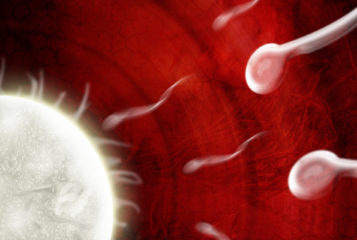Professor Lisa Jardine sounded tired. Contributing to a BBC Radio 4 Analysis programme on 26 October, the chair of the UK's Human Fertilisation and Embryology Authority (HFEA) declared that she was 'positively nostalgic' for secrecy and discretion.
The programme was a thought-provoking look at the issue of secrecy, the state and the public, and highlighted relationships between the media and the state, employees and their bosses, and civil servants and society. Amongst themes of whistle blowing, government transparency and public trust, the relevance of semen donation was not immediately apparent, but another contributor, educational psychologist Max von Manen pointed out that secrets are relational, they are between people and kept from people. So it might follow that keeping the fact of donor insemination (DI) and the identity of the donor secret from donor-conceived people treats them as if they are not in a relationship with their parents precisely because the relational aspect of anonymity is not understood.
What appeared to be preoccupying Professor Jardine was not that keeping secrets is necessarily a proper thing to do (she is after all, an historian) but that it might be the best thing to do for the women from certain faith communities where knowledge that donor sperm was used to create a child 'brings total shame on the woman, is adultery'. We have been here before. It took nearly fifty years for the practice of semen donation and insemination in the UK to be regulated because the subject was viewed as morally dubious, a threat to marriage, provocation of adulterous feelings between male donors and female recipients, and stigmatising for everyone involved. The best thing was to pretend that it never happened. The root of these beliefs in society's attitude to male infertility coincided with another feature: the conflation of the object being donated with the process. It seemed impossible to separate the gift (or provision) of procreative semen from the method of producing and delivering it. Sexual intercourse spoiling the giving of hope and life.
Other societies find this challenging too but have ways to circumvent the problem. Amongst Ultraorthodox Jews, some women undergo IVF so that it is an embryo and not sperm which passes into their bodies (1). In some Muslim societies, a temporary second marriage between a married man and an egg donor is arranged in order to avoid adultery between them (2). Elsewhere, it may not be a problem at all: there are patients in the UK whose first choice of donor would be someone they know and respect already. Research in Sri Lanka found that donation of semen by a man to his brother was seen by locals as perfectly acceptable - it was the western trained doctors who thought the practice 'atavistic' (3).
Faith groups (and I am a member of one) have a poor, at times appalling, record of abusing childless women. Made to suffer for and keep secret the fertility problems of their menfolk, it is a human rights issue and - according to Professor Jardine - it is right in our midst. Colluding with secrecy is not the answer. We know that keeping these kind of 'toxic' secrets requires the expenditure of emotional energy, damages family relationships and does nothing in the long run to reduce the stigma of infertility and treatment with donor sperm. Indeed any notion that secrets are easily kept was blown right of the water by the Analysis programme. The personal cost of keeping secrets was noted even by whistleblowers. In the field of gamete donation, it has long been known that many parents of donor-conceived children tend to tell other people (4), and my research revealed that semen donors do too - the fact of their having donated was often known to a wide circle of relatives, friends and colleagues (5).
There is no returning to a mythical golden age in which donors donated and patients were inseminated and everyone was told to carry on as if nothing had happened. Obviously if donor insemination is viewed as adultery, then it is unlikely to be worth the emotional cost of undergoing the procedure. Alternatively, we owe it to childless women, under social pressure from their communities to keep gamete donation a secret, to engage in discussions about how to destigmatise infertility and DI. Don't flag now, Professor Jardine, there is much work still to be done.
Sources and References
-
1) Kahn, S. (2000) Reproducing Jews: A Cultural Account of Assisted Conception in Israel, Durham and London: Duke University Press.
-
2) Tremayne, S. (2006) 'Not all Muslims are Luddites', Anthropology Today, vol 22, no 3, pp1-2
-
3) Simpson, R. (2004) 'Localising a Brave New World: New Reproductive Technologies and the Politics of Fertility in contemporary Sri Lanka' in Reproductive Agency, Medicine and the State, ed. Maya Unnithan-Kumar, New York and Oxford: Berghahn Books.
-
4) Back, K. and Snowden, R. (1988) 'The anonymity of the gamete donor', Journal of Psychosomatic Obstetrics and Gynaecology, 9 (1988), pp.191-198.
-
5) Speirs Jennifer M. (2007) 'Secretly connected? Anonymous semen donation, genetics and meanings of kinship', Doctoral thesis, University of Edinburgh. Unpublished.






Leave a Reply
You must be logged in to post a comment.